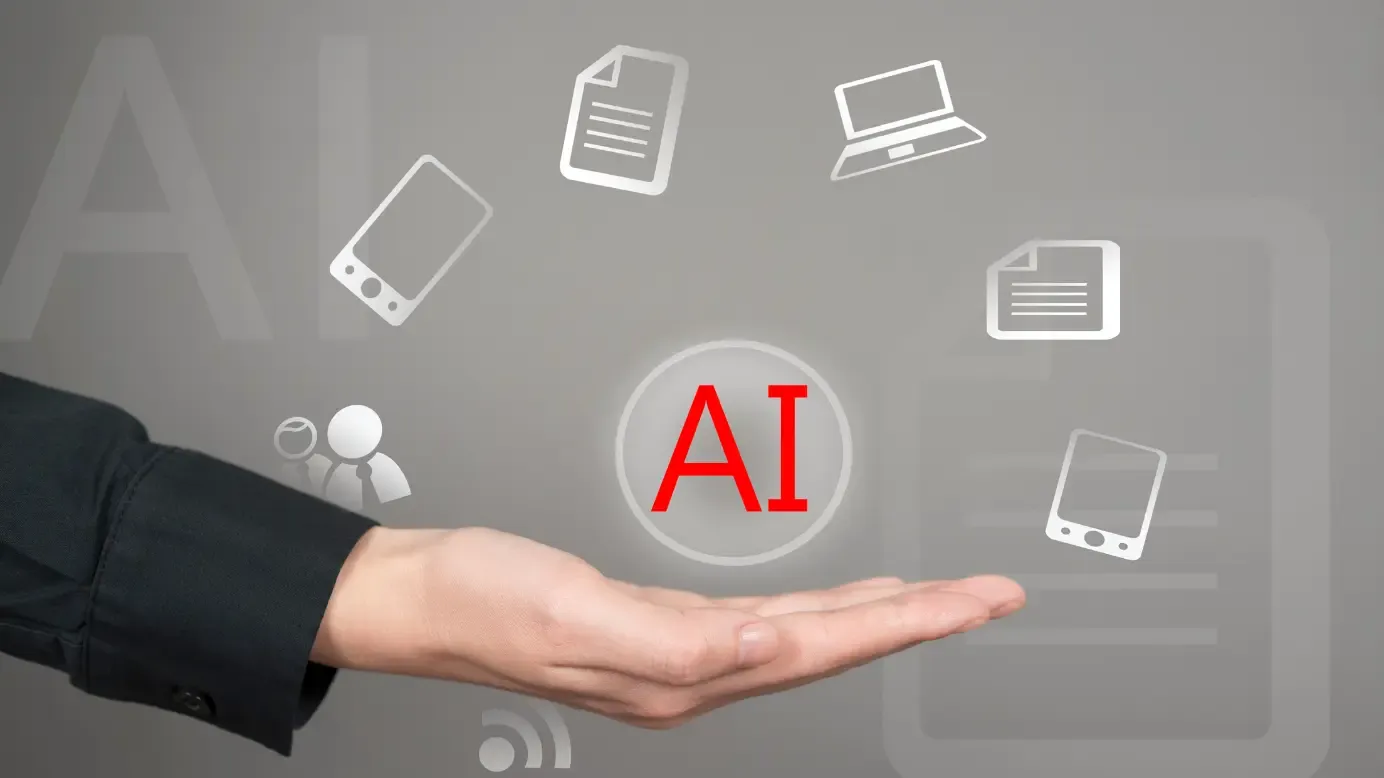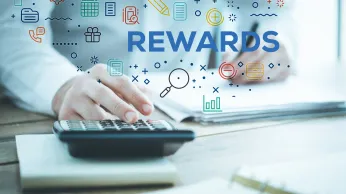AI in HR: Benefits, Tools & Future Trends for HR Professionals To Look For
Artificial intelligence in human resources (HR) is transforming the way companies manage recruitment, engagement, and performance. With AI tools for HR becoming more advanced, businesses are streamlining processes and boosting employee satisfaction.
في هذه الصفحة
- What is Artificial Intelligence in HR?
- فوائد الذكاء الاصطناعي في تعزيز تجربة الموظفين
- How is AI used in human resources?
- Top AI Tools for Human Resources in 2025
- دراسات حالة واقعية وأمثلة على الذكاء الاصطناعي في الموارد البشرية
- Challenges and ethical considerations when leveraging artificial intelligence in HR
- How Empuls supports AI-powered employee management (EM)
- Future of AI in HR: Trends and predictions
- الخاتمة
- الأسئلة الشائعة
من المتوقع أن يُحدث الذكاء الاصطناعي (الذكاء الاصطناعي) تحولاً في جميع الصناعات تقريباً، بما في ذلك الموارد البشرية. وقد بدأت بعض الشركات الكبرى، مثل جوجل وآي بي إم، وفرق الموارد البشرية وفرق استقطاب المواهب في شركة آي بي إم، في استخدام الذكاء الاصطناعي في سير العمل اليومي لتعزيز الكفاءة والإنتاجية والبقاء على رأس المشهد الرقمي المتطور باستمرار.
It has been reported that 76% of HR leaders believe that if they don't adopt HR practices in the next 1-2 years, they will not be as successful as the companies that have already incorporated AI technology.
Employees are the backbone of every company, and AI plays a huge role in enhancing the employee experience. AI has already been used in various aspects of employee management by supporting employees in learning and development and creating personalized upskilling programs based on their unique needs and preferences.
يمكن لأدوات الذكاء الاصطناعي أن تساعد أيضاً في رفاهية الموظف، حيث تقدم الأدوات المختلفة رؤى قيمة فيما يتعلق بعبء العمل والرفاهية العامة للموظفين.
يؤثر الذكاء الاصطناعي بشكل كبير على الموارد البشرية ويمكن أن يساعد في إعادة تشكيل العديد من جوانب الصناعة. إن دمج الذكاء الاصطناعي في ممارسات الموارد البشرية له فوائد متنوعة لكل من الشركات والموظفين.
مع دمج الذكاء الاصطناعي في الموارد البشرية، يتوقع أصحاب المصلحة أن يتم استخدامه بكفاءة. مع تبني العديد من الصناعات للذكاء الاصطناعي من أجل عمل أسرع وأكثر كفاءة، يجب على الشركات أن تتكيف وتبقى في صدارة المنافسة.
What is Artificial Intelligence in HR?
AI in HR refers to implementing Machine Learning (ML), Natural Language Processing (NLP), and other AI technologies to automate human resources tasks and aid decision-making.
It allows for a data-based approach to talent acquisition, employee advancement, and retention that aims to reduce biases and enhance job seekers' and employees' experiences.
AI tools can assist HR teams in diverse areas, including employee records management, payroll processing, recruitment, onboarding, and performance management.
Until recently, human resources was viewed as a purely administrative department. HR analytics (which sprung up ever since the rise of the digital era) introduced a more evidence-based approach to managing people, including a data-driven model instead of intuition-based decision-making.
تضمن النموذج القائم على البيانات جمع وتحليل بيانات الموارد البشرية مثل معدلات دوران الموظفين والتغيب عن العمل والتركيبة السكانية للموظفين لفهم الأنماط والمساعدة في اتخاذ القرارات الأساسية في مجال الموارد البشرية.
However, with the gradual passing of time and the introduction of advanced data analytics and AI tools, the role of HR has evolved. HR departments today use data more strategically to make better decisions, predict future trends, and contribute to organizational performance and growth.
Because of this, organizations now acknowledge HR as an effective strategic partner that can help shape business strategy and gain a competitive edge.
Interestingly, 81% of HR leaders are exploring AI to improve organizational efficiency, and 93% use AI tools to reduce organizational costs. One of the top barriers for 37% of HR Managers implementing AI is the lack of integration into the existing systems.
While traditional AI applications have streamlined HR tasks, generative AI is revolutionizing the field by enabling the creation of new content and insights. According to McKinsey, generative AI offers significant value in HR through:
- Content creation: Automating the development of job postings and personalized candidate communications.
- Data summarization: Extracting insights from unstructured data to enhance performance management.
- Employee engagement: Utilizing AI-driven chatbots to provide personalized learning recommendations.
- People analytics: Analyzing large datasets to predict attrition and inform workforce planning.
These are only few applications of AI that can lead to the substantial efficiency gains and more informed decision-making in HR functions.
فوائد الذكاء الاصطناعي في تعزيز تجربة الموظفين
هناك العديد من الفوائد التي يمكن أن تحققها فرق الموارد البشرية من استخدام الذكاء الاصطناعي لتعزيز تجربة الموظفين. تتضمن بعض الفوائد المهمة ما يلي:
1. تبسيط عمليات التوظيف
AI algorithms can effectively analyze vast candidate data, enhancing the recruitment process's speed and accuracy. AI can also provide more objective candidate evaluation, which can help reduce unconscious biases and ensure a fair selection process. It removes human error and subjective decision-making, which fosters fairer hiring practices.
يتمتع الذكاء الاصطناعي أيضًا بالقدرة على تقييم سلوكيات المرشح في مكان العمل من خلال تقنيات التحليل المتقدمة، والتي يمكن أن تساعد في تحديد الأنسب للمؤسسة. كما يمكن أن يساعد الذكاء الاصطناعي أيضًا في التنبؤ باحتياجات القوى العاملة المستقبلية من خلال تحليل الاستراتيجية التنظيمية واتجاهات السوق وبيانات الأداء.
2. تحسين عملية التأهيل
AI can help automate the daily onboarding tasks and allows HR teams to focus on the strategic side of things. AI can also help create a personalized onboarding experience, as it will be tailored to each employee's individual needs, enhancing their initial engagement and allowing them to integrate seamlessly into the company's culture. By quickly setting up your accounts and offering personalized training programs, AI-driven systems help speed up the recruitment and onboarding process.
3. تعزيز مشاركة الموظفين
يمكن لأدوات الذكاء الاصطناعي تتبع أهداف الموظفين وأدائهم باستمرار وتقديم ملاحظات فورية. من خلال وضع أهداف واضحة وقابلة للقياس، يعزز الذكاء الاصطناعي أيضًا تقييمات الأداء غير المتحيزة.
AI can also analyze performance data to help predict future performance trends, which supports successful planning and talent management. AI-automated performance management can also lead to enhanced productivity and better results.
4. Strategic workforce planning enhanced by AI
AI facilitates strategic workforce planning by analyzing current workforce capabilities and predicting future talent needs. Through data-driven insights, HR can identify skill gaps, forecast turnover rates, and develop targeted recruitment strategies.
For instance, AI can assess the impact of emerging technologies on job roles, enabling proactive reskilling programs. This strategic approach ensures that organizations remain agile and prepared for future workforce challenges.
How is AI used in human resources?
Artificial Intelligence (AI) is transforming human resources by automating repetitive tasks, improving decision-making, and enhancing employee experiences. HR departments are leveraging AI to streamline their operations and create more personalized, efficient, and data-driven processes.
From recruitment to employee retention, AI is helping HR professionals focus on strategic initiatives that drive business growth. Here are some common applications of AI in human resources:
- Recruitment and talent acquisition: AI automates resume screening, candidate ranking, and job matching using algorithms and predictive analytics.
- Employee engagement and support: Chatbots and virtual assistants provide real-time assistance and support, improving employee satisfaction and productivity.
- Onboarding and training: AI tools generate personalized onboarding experiences and recommend learning paths tailored to individual roles and goals.
- Performance management: AI analyzes performance data to offer objective feedback and identify high-potential employees for succession planning.
- Workforce planning: Predictive analytics help HR teams forecast hiring needs, detect flight risks, and optimize workforce strategies.
- Diversity and inclusion: Natural language processing (NLP) detects biases in job descriptions and promotes inclusive language to attract diverse candidates.
- Policy and content creation: Generative AI tools help create consistent, data-backed HR documents, such as job descriptions, training manuals, and performance summaries.
With these applications, AI is reshaping the future of work by empowering HR teams to be more agile, proactive, and employee-centric.
Top AI Tools for Human Resources in 2025
يتم الآن دمج أدوات وتقنيات الذكاء الاصطناعي في ممارسات الموارد البشرية لتعزيز الكفاءة وإشراك الموظفين وتحقيق نتائج الأعمال المرغوبة. تتضمن بعض أدوات وتقنيات الذكاء الاصطناعي الأساسية المدرجة في الموارد البشرية ما يلي:
1. روبوتات المحادثة والمساعدون الافتراضيون
AI chatbots are virtual assistants that use artificial intelligence to support and assist employees. These chatbots can answer frequently asked questions, provide insights about the company's policies, and assist with basic HR tasks and inquiries. AI chatbots can help streamline employee support processes, lessen response times, and enhance employee satisfaction.
يمكن أن يساعد المساعدون الافتراضيون المدعومون بالذكاء الاصطناعي أقسام الموارد البشرية في مهام مختلفة، مثل جعل وظائفهم أكثر كفاءة وفعالية. ويمكنهم أيضاً المساعدة في أتمتة مهام الموارد البشرية المتكررة مثل التأهيل والإجازات وإدارة المزايا.
They can also offer personalized recommendations to employees regarding career development, performance management, and other training opportunities. Virtual assistants can also allow HR specialists to focus on more strategic tasks and enhance employee engagement.
2. Predictive analytics
تستخدم حلول التحليلات التنبؤية خوارزميات الذكاء الاصطناعي لفحص بيانات الموظفين وملاحظة الأشخاص الذين لديهم إمكانات أعلى للنجاح في أدوارهم. كما يمكن لهذه الأساليب أيضاً التنبؤ بالنجاح المستقبلي من خلال النظر في متغيرات الأداء السابق والمسار الوظيفي.
By identifying high-potential candidates, companies can focus their development efforts and offer progress in the company. Predictive analytics can aid succession planning by identifying prospective talent within the organization.
يمكن أن تؤدي الاستفادة من التحليلات التنبؤية إلى تخطيط أفضل للقوى العاملة. يمكن للذكاء الاصطناعي تحديد الأنماط والاتجاهات من خلال تحليل كم هائل من البيانات، مما يسمح للشركات باتخاذ قرارات أكثر ذكاءً فيما يتعلق بالتوظيف وتخطيط التعاقب الوظيفي. يمكن للتحليلات التنبؤية أيضاً تحديد المخاطر المحتملة للرحيل، مما يسمح لأقسام الموارد البشرية بوضع استراتيجيات للمساعدة في الاحتفاظ بأفضل المواهب بفعالية.
3. معالجة اللغة الطبيعية (NLP)
HR professionals use NLP techniques to analyze employee and candidate data, emails, resumes, and feedback. NLP algorithms analyze unstructured text data to utilize valuable information, including sentiment analysis, personality traits, and competency.
يمكن أن يساعد ذلك فرق الموارد البشرية في اتخاذ قرارات التوظيف والاحتفاظ بالمواهب وتحسين تحفيز الموظفين. كما يمكن للبرمجة اللغوية العصبية أيضاً أتمتة عمليات الموارد البشرية مثل فحص السير الذاتية وتحليل ملاحظات الموظفين وتصنيف المرشحين.
يمكن لمتخصصي الموارد البشرية استخدام البرمجة اللغوية العصبية لفحص السير الذاتية والعثور على المرشح المناسب للوظيفة. تقوم خوارزميات البرمجة اللغوية العصبية باستخراج الكلمات الرئيسية والعبارات، ومطابقتها مع الوصف الوظيفي، وترتيب المرشحين بناءً على مؤهلاتهم.
يمكن أيضًا استخدام البرمجة اللغوية العصبية لتحليل المشاعر، والتي يمكن استخدامها لتحديد مدى ملاءمة المرشحين لثقافة الشركة. يمكن لخوارزميات البرمجة اللغوية العصبية أيضاً تحديد التحيزات في إعلانات الوظائف الشاغرة واستخدام لغة شاملة لتعزيز التنوع في مجموعة المرشحين.
4. AI Centers of Excellence (CoE) in HR
Establishing an AI Center of Excellence (CoE) within HR departments serves as a centralized body to oversee AI initiatives. The CoE is responsible for setting best practices, ensuring compliance with ethical standards, and facilitating knowledge sharing across the organization.
By having a dedicated team focused on AI, HR can more effectively integrate AI tools for human resources, drive innovation, and maintain consistency in AI applications.
5. Generative AI (GenAI) in HR
Generative AI (GenAI) is revolutionizing HR by enabling the creation of content such as job descriptions, training materials, and policy documents. HR departments are leveraging GenAI to automate repetitive tasks, allowing professionals to focus on strategic initiatives.
For instance, GenAI can generate personalized onboarding materials tailored to individual roles, enhancing the new hire experience. Additionally, it aids in drafting performance review summaries by analyzing employee data, ensuring consistency and objectivity.
دراسات حالة واقعية وأمثلة على الذكاء الاصطناعي في الموارد البشرية
دعونا نستعرض بعض الأمثلة الواقعية عن كيفية قيام بعض الشركات الكبرى في العالم بدمج الذكاء الاصطناعي في ممارسات الموارد البشرية وكيف أسهمت هذه الاستراتيجية في إعدادها للنجاح.
1. Unilever's AI-powered recruitment
Unilever's HR department has replaced conventional hiring with digital interviews and AI-powered online assessments. This unique approach also expands the talent pool by enhancing diversity and inclusivity.
It also reduces unconscious biases, which ensures a fair and objective selection process. This has resulted in a more efficient hiring process that aligns with the demands and expectations of the modern talent pool.
2. مشاركة الموظفين التي تعتمد على الذكاء الاصطناعي في هيلتون
Hilton has implemented AI-driven strategies to enhance employee engagement. These strategies aim to improve the employee experience, increase productivity, and reduce turnover rates. By implementing AI, Hilton saw an opportunity to enhance human connection and responsiveness in the application and interview process.
رأى قادة الموارد البشرية قوة الذكاء الاصطناعي في تقليل الوقت اللازم لملء الوظائف الشاغرة وتعزيز وتحسين تجربة المرشحين، وتقليل عبء العمل الإداري على مسؤول التوظيف. وقد أدى ذلك إلى إنشاء Ally، وهو روبوت دردشة آلي للمرشحين الوافدين، والذي تم العثور عليه على موقع هيلتون للوظائف.
استخدمت هيلتون أيضاً الذكاء الاصطناعي في مقابلات وتقييمات الفيديو، مما أدى إلى تحقيق صافي نقاط مروجين بلغ 85 نقطة وتحسين معدلات التوظيف في المقابلات. باستخدام تطبيق Ally، يتم إرسال الوظيفة التي تتقدم لها إلى هاتفك مع رابط لإكمال طلب التوظيف في هيلتون في أقل من دقيقة واحدة، وهو أمر مثير للإعجاب.
3. تحليلات واتسون من آي بي إم في مجال الموارد البشرية
IBM Watson Orchestrate is an AI-powered tool that allows HR professionals to automate routine HR tasks, analyze data, and make better business decisions. It uses Natural Language Processing (NLP) to draw from prebuilt and custom skills to implement functions specific to human resources processes by integrating with applications that your HR department already relies on.
يمكن لمحترفي المساعدة الفنية استخدام Orchestrate لأتمتة المهام التي تستغرق وقتًا طويلاً مثل البحث عن المرشحين والتوظيف، مما يسمح لهم بتركيز وقتهم وطاقتهم على الجوانب الأكثر استراتيجية للتوظيف. وقد أدى ذلك إلى تعزيز الإنتاجية لمحترفي الموارد البشرية، مما أدى إلى تعيينات أفضل للمرشحين المتميزين.
وتساعد Orchestrate أيضًا على أتمتة مهام الشراء اليدوية، مما يوفر وقتًا ثمينًا لفريق العمل في IBM لتخطيط المبادرات الاستراتيجية وتلبية احتياجات العميل ومتطلباته. يحتاج التأهيل إلى اهتمام بشري والكثير من الأعمال الورقية. يعمل نظام Watson من IBM على أتمتة هذه العملية التي تستغرق وقتاً طويلاً ويقدم المرشحين الجدد للشركة بسلاسة.
من خلال تفريغ هذه المهام إلى Orchestrate، يمكن لفرق الموارد البشرية التركيز على تقديم نهج أكثر تأثيراً يركز على الإنسان للشركة والموظفين.
Challenges and ethical considerations when leveraging artificial intelligence in HR
Although there are many benefits that artificial intelligence offers to HR teams, there are still some challenges and ethical considerations that you need to be aware of when incorporating AI in HR practices. Some critical factors to consider include:
1. خصوصية البيانات وأمنها
مع تزايد الحاجة إلى الذكاء الاصطناعي واستخدامه في ممارسات الموارد البشرية، خاصةً عند التعامل مع بيانات الموظفين والمرشحين الحساسة، كانت هناك مخاوف متزايدة بشأن خصوصية البيانات والأمن السيبراني. يجب على الشركات أن تحتفظ ببيانات موظفيها بحساسية وعناية وأن تمتثل للوائح حماية البيانات مثل اللائحة العامة لحماية البيانات وقانون حماية البيانات.
على الرغم من أن استخدام الذكاء الاصطناعي في الموارد البشرية يكتسب زخماً، إلا أن العديد من قادة الموارد البشرية لديهم مخاوف بشأن دقته. كما أنهم مهتمون أيضاً بضمان عدم استخدام البيانات الحساسة التي يقدمها الموظفون والمرشحون في التدريب الإضافي لنموذج الذكاء الاصطناعي، مما يعرض خصوصيتهم وأمنهم للخطر في نهاية المطاف.
HR departments need to implement robust cybersecurity measures, like investing in a Remote access VPN, using reliable antivirus software, and using multi-factor authentication to maintain trust, protect employees' confidential information, and ensure they're protected from potential data breaches.
2. التحيز والإنصاف في الذكاء الاصطناعي
One of the most significant drawbacks of using AI is the bias during the hiring process. The US Equal Opportunity Employment Commission announced in May last year that employers using AI tools can be liable for discriminatory hiring practices. HR leaders need to ask specific questions during the software purchasing process and ensure they are aware of any potential biases.
يمكن أن تؤدي خوارزميات الذكاء الاصطناعي إلى إدامة التحيزات الاجتماعية في البيانات التي يتم تدريبها عليها. كن حذرًا من المخرجات التمييزية المحتملة على أساس الجنس والعرق والعمر والخصائص الحساسة الأخرى.
إذا كانت البيانات المستخدمة لتدريب نماذج الذكاء الاصطناعي تنطوي على تحيزات، فإن هذه التحيزات يمكن أن تستمر في عملية اتخاذ القرار. يمكن أن يؤدي ذلك إلى ممارسات توظيف تمييزية وعدم تكافؤ الفرص للموظفين من خلفيات متنوعة.
3. حلول واحدة تناسب الجميع
يمكن لأنظمة الموارد البشرية التي تعتمد على الذكاء الاصطناعي أن تقدم حلولاً قياسية لأكثر مشكلات قسم الموارد البشرية شيوعاً. في حين أن هذا يمكن أن يساعد في تحسين الكفاءة، إلا أنه يؤدي أيضاً إلى نقص الدعم الفردي للاحتياجات والمتطلبات الشخصية للموظف.
يجلب كل موظف نقاط القوة والضعف والخبرات الخاصة به إلى مكان العمل. إن الاعتماد على الذكاء الاصطناعي فقط لإدارة أداء الموظفين وتطويرهم يمكن أن يمنع اللمسة الإنسانية والتواصل المطلوبين لفهم ورعاية أفضل المواهب.
4. Emphasis on human-centered AI approaches
Adopting a human-centered approach to AI in HR ensures that technology serves to augment human decision-making rather than replace it. This involves designing AI systems that are transparent, explainable, and aligned with human values.
For example, AI-driven recruitment tools should provide insights into their decision-making processes, allowing HR professionals to understand and trust the outcomes. By focusing on human-centered AI, organizations can foster greater acceptance and effective utilization of AI tools for human resources.
5. Navigating AI-induced workforce disruptions
The introduction of AI in HR processes may lead to workforce disruptions, including changes in job roles and required skill sets.
Organizations must proactively manage these transitions by communicating changes, providing reskilling opportunities, and involving employees in the transformation process. By addressing potential disruptions head-on, companies can mitigate resistance and foster a culture of adaptability.
How Empuls supports AI-powered employee management (EM)
As HR teams increasingly turn to artificial intelligence for smarter and faster decision-making, Empuls stands out as a powerful platform that bridges AI with employee management (EM) to create more engaged, productive, and satisfied workforces. Empuls doesn’t just streamline processes—it enhances the entire employee lifecycle, making it a valuable addition to any HR tech stack embracing AI.
1. Automating employee engagement with intelligent nudges

Empuls uses AI-powered nudges and personalized notifications to drive participation in engagement programs. Whether it’s pulse surveys, recognition events, or wellness challenges, the platform ensures that employees stay informed and motivated through timely reminders. This automation reduces manual follow-ups and ensures consistent engagement across teams.
2. Using analytics to improve employee experience

Empuls provides real-time dashboards and sentiment analysis based on employee feedback, surveys, and interactions. With built-in analytics, HR leaders can identify patterns in engagement, burnout risk, and recognition trends. These insights empower organizations to make data-driven decisions to retain top talent and elevate morale.
3. Enabling continuous recognition and rewards

Recognition is a key pillar of employee management, and Empuls automates this with AI-driven suggestions and reward triggers. For example, if an employee reaches a milestone or consistently exceeds performance goals, Empuls can automatically prompt managers to recognize and reward them through digital badges, gift cards, or custom awards.
This fosters a culture of continuous appreciation, boosts motivation, and aligns with the broader AI-driven approach to HR.
4. Personalizing employee communication at scale

AI in HR thrives on personalization, and Empuls leverages this by delivering tailored internal communications to employees based on their behavior, location, and preferences. Whether it's onboarding information, learning modules, or wellness updates, the right message is delivered to the right person at the right time—without HR teams needing to micromanage every message.
This enhances the employee communication experience, a critical component of AI-led EM strategies.
5. Supporting strategic HR planning with feedback insights

With Empuls, HR teams can conduct pulse surveys, lifecycle feedback, and eNPS measurements with ease. The platform uses AI to categorize and summarize open-ended responses, helping HR teams quickly interpret employee sentiment and act on it. This feedback loop is essential for shaping talent strategies and planning workforce interventions proactively.
Whether you're aiming to reduce attrition, drive engagement, or improve your employer brand, Empuls offers the AI-enabled infrastructure to support your goals and stay ahead of the competition. Schedule a call now to learn more!
Future of AI in HR: Trends and predictions
يرتبط مستقبل الموارد البشرية وتقدمها ارتباطاً وثيقاً بالذكاء الاصطناعي. سيساعد الذكاء الاصطناعي في تحويل ممارسات الموارد البشرية، مما يسمح بتحويل ممارسات الموارد البشرية، مما يسمح بتعزيز كفاءة التوظيف واكتساب المواهب وإدارة الموظفين. يمكن لمحترفي الموارد البشرية الآن تجربة عمليات مبسطة والتركيز على المخرجات القائمة على البيانات.
The integration of AI in HR has led to the creation of specialized roles aimed at managing and optimizing AI tools for human resources. Positions such as HR AI Product Managers and AI Ethics Officers are becoming increasingly common.
These roles are responsible for overseeing the deployment of AI solutions, ensuring ethical considerations are addressed, and aligning AI initiatives with organizational goals. By having dedicated professionals in these positions, companies can better navigate the complexities of AI implementation in HR.
Gartner reports that by 2025, "60% of enterprise organizations will adopt a responsible AI framework for their HR technology, and in turn, achieve a greater employee experience and trust in the organization."
ومع ذلك، من الضروري أن نلاحظ أن الذكاء الاصطناعي لن يحل محل الحاجة إلى متخصصي الموارد البشرية. فالمنظور البشري والخبرة البشرية يلعبان دوراً حاسماً في الموارد البشرية، مما يسمح للشركات بالازدهار والنمو. لهذا السبب يجب على الشركات تحقيق التوازن الصحيح بين التكنولوجيا والتفاعل البشري لجني الفوائد.
الخاتمة
يمكن لأدوات وحلول الذكاء الاصطناعي تعزيز تجربة الموظفين وزيادة الاحتفاظ بهم. يمكن للموظفين التخلص من المهام الإدارية المتكررة، وتبسيط سير العمل، واكتساب مهارات تقنية جديدة.
يساعد استخدام الذكاء الاصطناعي لتعزيز تجربة الموظف على تحسين رفاهية الموظف، كما يساعد المؤسسة على بناء سمعة جيدة. يمكن لأدوات الذكاء الاصطناعي إنشاء برامج تدريب مخصصة وأتمتة المهام اليدوية والمتكررة، مما يسمح بسير العمل بسلاسة وتحفيز الموظفين وإنتاجيتهم.
الأسئلة الشائعة
1. What is the role of AI in HR?
AI in HR streamlines and enhances tasks like recruitment, onboarding, performance management, and workforce planning. It helps automate repetitive processes, improve decision-making with data insights, reduce biases, and personalize employee experiences.
2. Can HR be replaced by AI?
No, AI cannot fully replace HR. While it automates tasks and boosts efficiency, the human touch in areas like employee relations, ethical decision-making, and organizational culture is irreplaceable. AI supports HR, but doesn’t eliminate the need for human professionals.
3. What companies use AI in HR?
Top companies using AI in HR include Unilever, Hilton, IBM, and Google. These companies leverage AI for recruiting, engagement, onboarding, and analytics, improving both operational efficiency and employee experience.
4. How much is AI used in HR?
AI usage in HR is rapidly increasing—81% of HR leaders are exploring AI to improve efficiency, and 93% use it to reduce costs. Its adoption spans various functions, with growing reliance on tools like chatbots, predictive analytics, and generative AI.













